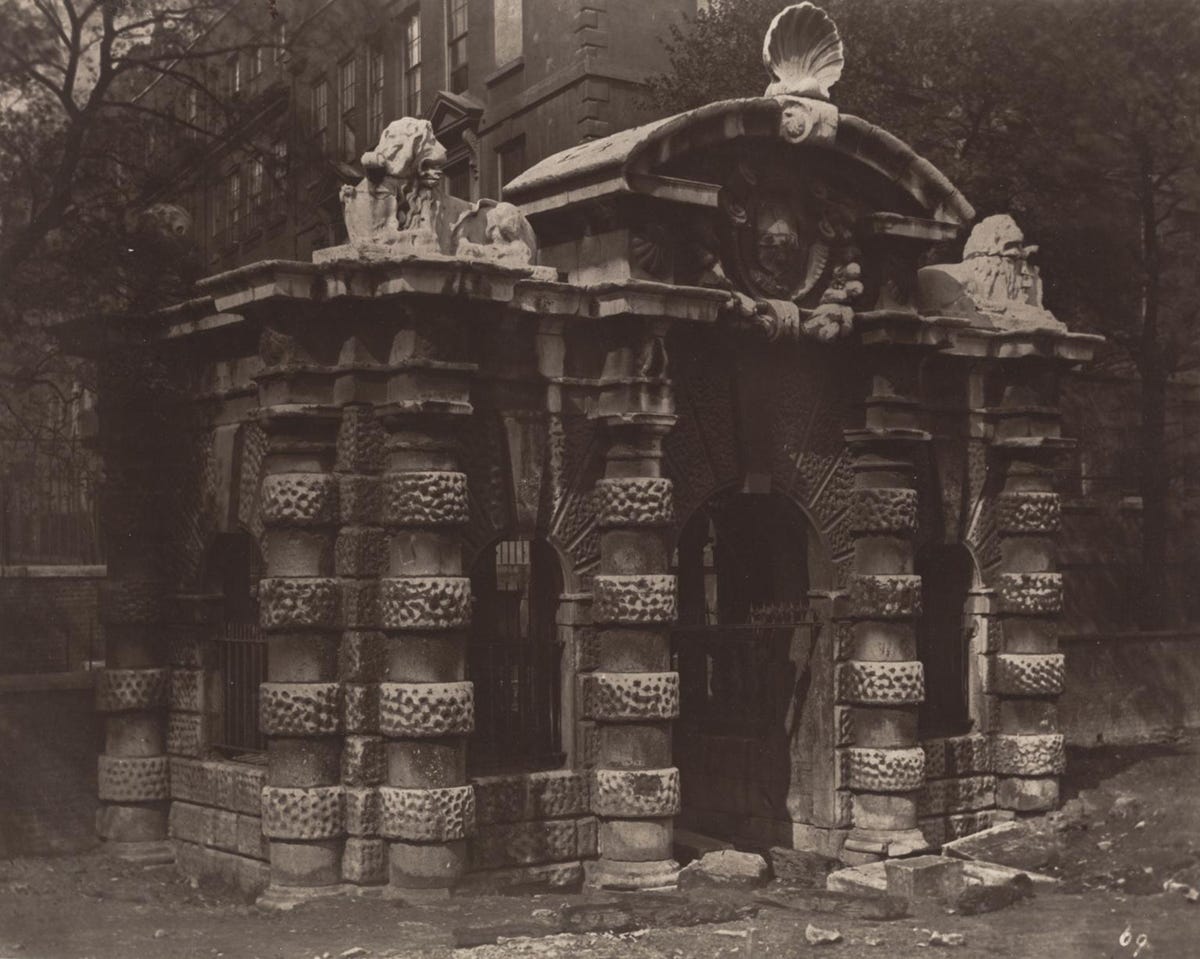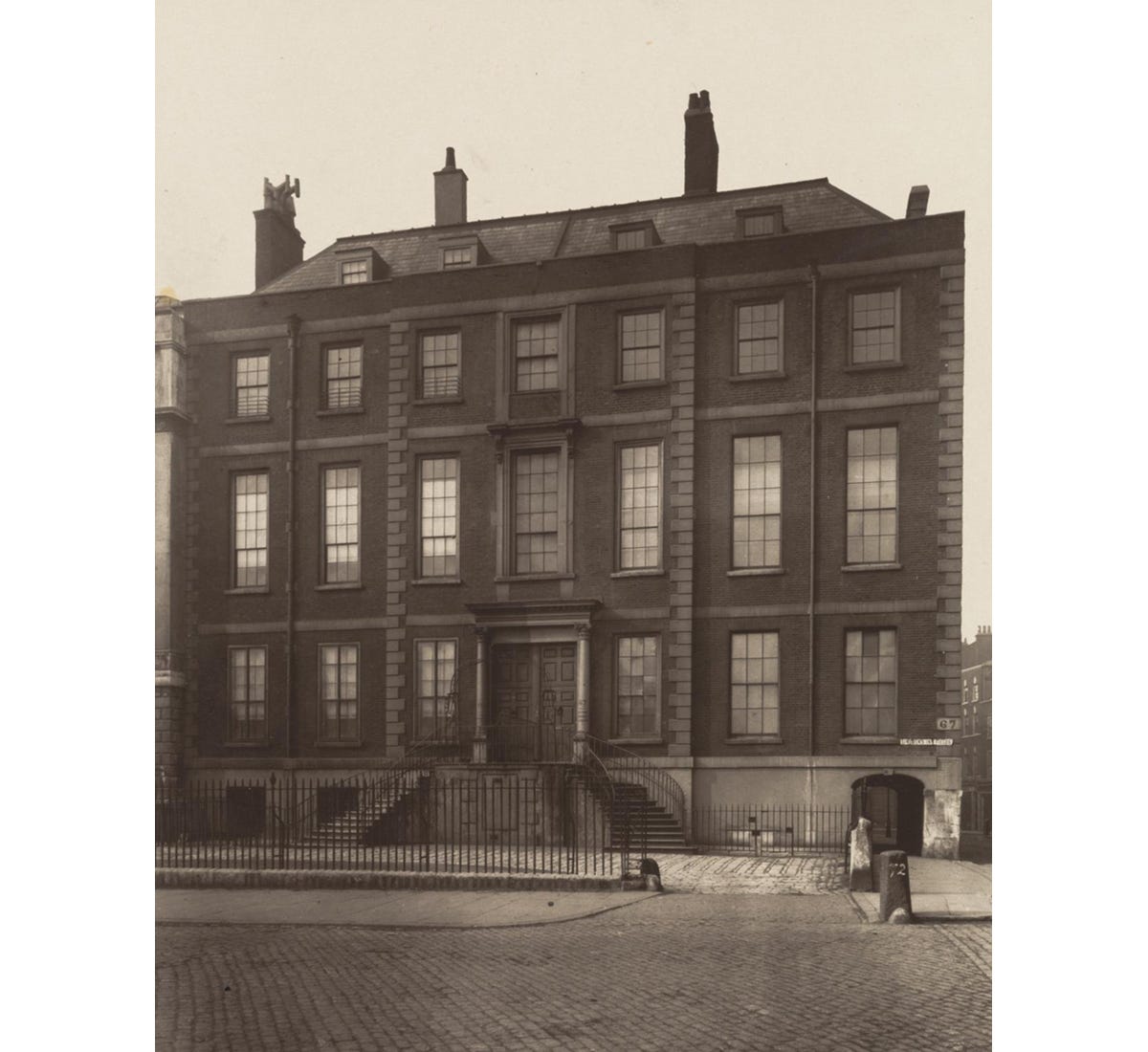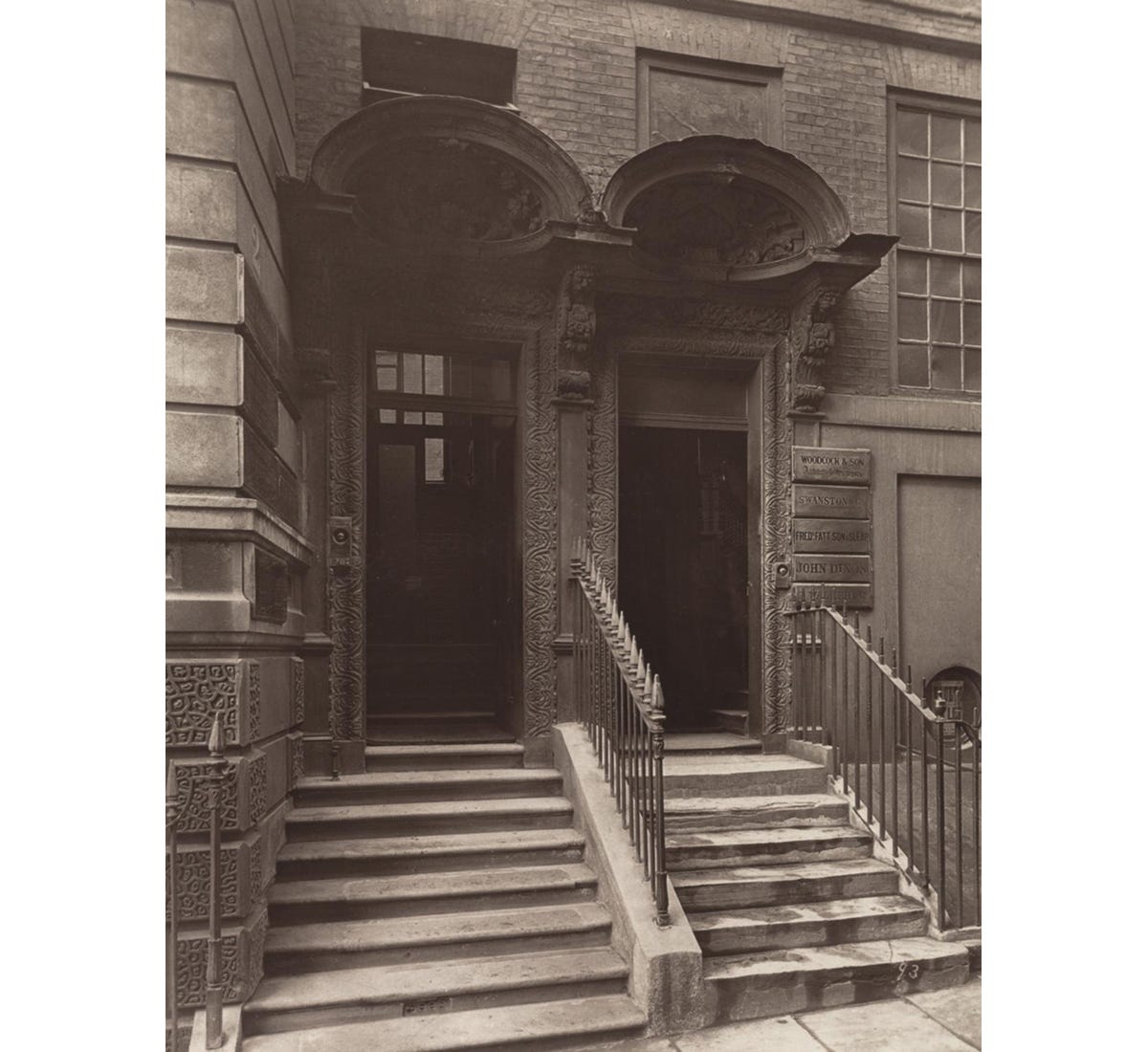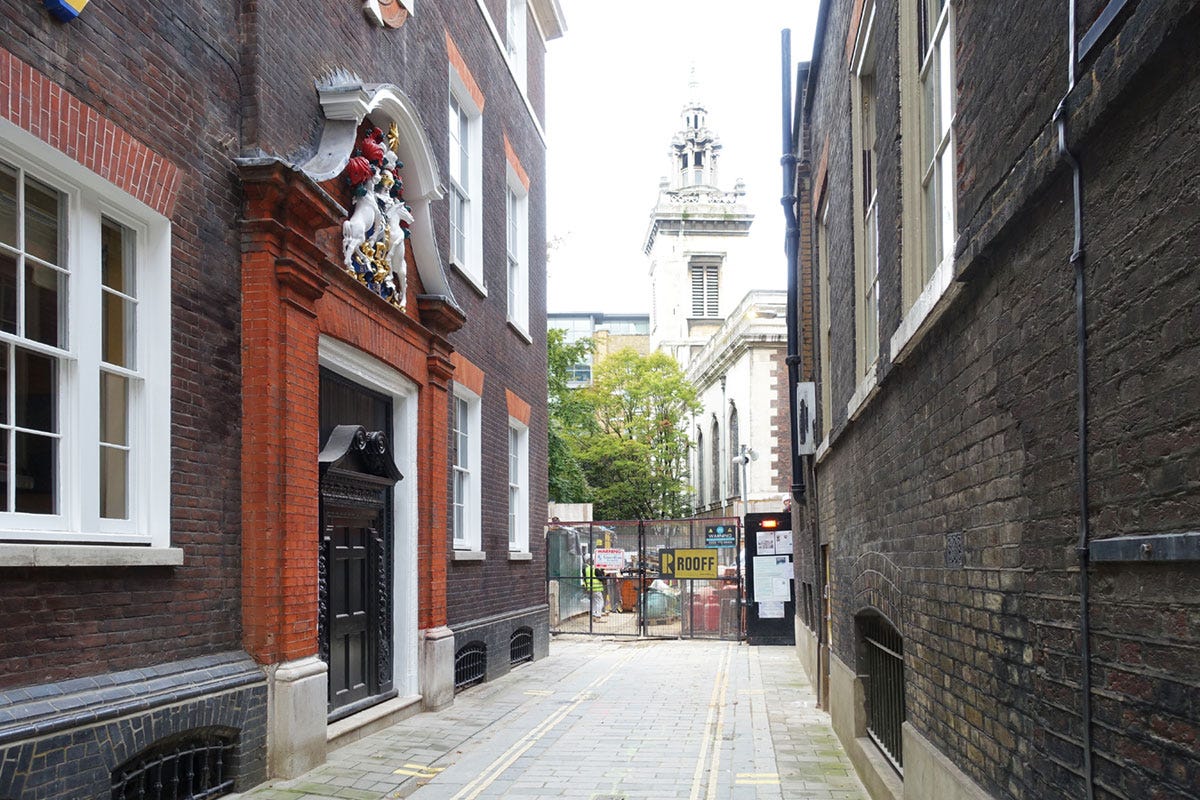Visiting the surviving relics of old London
A photographic tour of the capital in search of its enduring built heritage.
Towards the end of the 19th Century there was a fear in certain circles that ‘old London’ was disappearing. That buildings of architectural and antiquarian value were at risk of being lost as the capital rapidly expanded and changed (the population grew from just over 1 million in 1801 to 6.5 million in 1901).
Among that circle was a man named Alfred Marks, who – spurred into action by the planned demolition of the Oxford Arms, a galleried coaching inn, to make way for an expansion of the Old Bailey criminal court – helped create The Society for Photographing the Relics of Old London.
The Society enlisted father and son photographers Alfred and John Bool to capture for posterity 120 images of 70-odd locations around the capital between 1875 and 1886. It wasn’t intended to be an exhaustive documentation, but one representative of the “quaintness” of old London.

The buildings and features they chose are an intriguing selection. There are inns of chancery and court, and inns of the drinking variety, as well as churches and hospitals. Sometimes the photos focus on specific buildings, elsewhere on wider streetscapes, and occasionally on building interiors. The Society seemed to have a particular fascination with doors and gatehouses.
The project was funded through subscriptions and produced between 6-12 photographs over 12 annual volumes, printed by Henry Dixon. Complete sets of the images are held in multiple major archives and institutions. For this newsletter, I’ve relied on the Tate’s collection. Shout-out to them for their open licencing!
Reviewing the body of work 150 years on, it turns out Alfred Marks and co were reasonably justified in their fears. By my estimation, only about 40% of the photographed buildings survive. Although I’ll defer to the expertise of the London Archives, who, at a talk on the subject, told me it was about 50%.
Recently, I set out to see how many of the original photographs I could recreate. Skipping a few shots that were alternative angles of a single location, and some locations that I couldn’t access, I visited 24 of the surviving relics of old London. (I took all my photos in landscape orientation and – where I could – less tightly cropped to show a bit more of the contemporary context.)
It was fascinating to see how different buildings and landmarks have in turns changed and stayed the same. Also, how trees have grown and grown more numerous (granted, I took my photos at a different time of the seasons).
I present the pictures below in the order in which the Society issued them, with a couple of outliers at the end that I’ll explain more about when we get there.
Lincoln’s Inn Gateway
St Bartholomew The Great
A new entrance was built in front of the tower and the windows in the left-hand side of the building altered during renovations which began in the late 1880s.
Old Houses in Holborn [Staple Inn]
Around 1886-87, work began to remove the plaster from the building’s exterior, revealing the original timbers, and a couple of its Tudor windows were reinstalled.
Canonbury Tower
Barnard’s Inn
Unfortunately, the present-day configuration of the buildings – part of Gresham College – did not allow me to get a similarly wide-angle shot as the one from 1879.
Charterhouse, General View
George Inn Yard, Southwark
The George was one of six galleried coaching inns photographed by the Society. It is the only one that survives and, in fact, is the only surviving inn of its kind in London.
Banqueting House, Whitehall
Water Gate of York House
Lincoln’s Inn Field, Lindsey House
Lincoln’s Inn Field, Newcastle House
Old Houses, Fleet Street
These buildings have changed quite a bit since 1884. However, the centre and right buildings still have the bay windows, and you can see the same crenelations and circular top of the window behind the tower of St-Dunstan-in-the-West next door, so I’m confident it’s the same location.
Doorways, Laurence Pountney Hill
College Street
Note the building on the corner of Little College Street is no more. The door with the crest above it (which has its own separate Society photo) is to Innholders’ Hall, home of the Worshipful Company of Innholders’, a guild formed in the 16th Century and on this site since at least 1613.
Doorway, College Hill
Note the almost identical decorative arch two doors down. I took a few photos of that first before I realised it was the wrong one – the central face is slightly different on each arch.
Inner Temple, Gate House
Here we have another building whose original timbers have been revealed (in 1905) since the Society photo was taken. Despite what the sign in the 1885 image says, it was never the palace of Henry VIII or Cardinal Wolsey. This version of the building above the entrance to Inner Temple was constructed in 1610 and was at that time a tavern. Today it’s known as Prince Henry’s Room, but opinions differ on whether it’s named after the son of King James I, or derived from the tavern name, The Prince’s Arms.
Inner Temple, King’s Bench Walk
Middle Temple, Gate House
Gray’s Inn, Field Court
St John’s Gate, Clerkenwell
Great St Helen’s
Queen Anne’s Gate
Outliers
My next couple of photos are of surviving relics, but they’re not exactly as they seem…
Temple Bar
The Society photo was taken when Temple Bar was in its original location, at the point where Fleet Street and the Strand meet (just west of Middle Temple gatehouse). However, in 1878, the same year the photograph was issued, Temple Bar was removed to ease the flow of traffic and make way for the construction of the Royal Courts of Justice. It was first rebuilt in a park in Hertfordshire, in the east of England, and later moved to its current location, near St Paul’s Cathedral, in 2004.
Lambeth Palace, Gate House
The 1883 photo is of the inner side of the gatehouse. Unfortunately for me, Lambeth Palace is currently undergoing a series of renovations and is closed to the public, so I had to make do with a picture from the outside.




















































